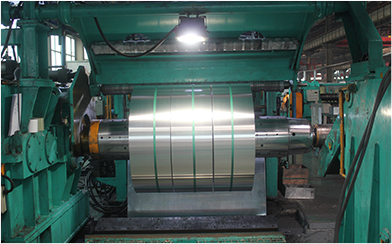
-
 Afrikaans
Afrikaans -
 Albanian
Albanian -
 Amharic
Amharic -
 Arabic
Arabic -
 Armenian
Armenian -
 Azerbaijani
Azerbaijani -
 Basque
Basque -
 Belarusian
Belarusian -
 Bengali
Bengali -
 Bosnian
Bosnian -
 Bulgarian
Bulgarian -
 Catalan
Catalan -
 Cebuano
Cebuano -
 Corsican
Corsican -
 Croatian
Croatian -
 Czech
Czech -
 Danish
Danish -
 Dutch
Dutch -
 English
English -
 Esperanto
Esperanto -
 Estonian
Estonian -
 Finnish
Finnish -
 French
French -
 Frisian
Frisian -
 Galician
Galician -
 Georgian
Georgian -
 German
German -
 Greek
Greek -
 Gujarati
Gujarati -
 Haitian Creole
Haitian Creole -
 hausa
hausa -
 hawaiian
hawaiian -
 Hebrew
Hebrew -
 Hindi
Hindi -
 Miao
Miao -
 Hungarian
Hungarian -
 Icelandic
Icelandic -
 igbo
igbo -
 Indonesian
Indonesian -
 irish
irish -
 Italian
Italian -
 Japanese
Japanese -
 Javanese
Javanese -
 Kannada
Kannada -
 kazakh
kazakh -
 Khmer
Khmer -
 Rwandese
Rwandese -
 Korean
Korean -
 Kurdish
Kurdish -
 Kyrgyz
Kyrgyz -
 Lao
Lao -
 Latin
Latin -
 Latvian
Latvian -
 Lithuanian
Lithuanian -
 Luxembourgish
Luxembourgish -
 Macedonian
Macedonian -
 Malgashi
Malgashi -
 Malay
Malay -
 Malayalam
Malayalam -
 Maltese
Maltese -
 Maori
Maori -
 Marathi
Marathi -
 Mongolian
Mongolian -
 Myanmar
Myanmar -
 Nepali
Nepali -
 Norwegian
Norwegian -
 Norwegian
Norwegian -
 Occitan
Occitan -
 Pashto
Pashto -
 Persian
Persian -
 Polish
Polish -
 Portuguese
Portuguese -
 Punjabi
Punjabi -
 Romanian
Romanian -
 Russian
Russian -
 Samoan
Samoan -
 Scottish Gaelic
Scottish Gaelic -
 Serbian
Serbian -
 Sesotho
Sesotho -
 Shona
Shona -
 Sindhi
Sindhi -
 Sinhala
Sinhala -
 Slovak
Slovak -
 Slovenian
Slovenian -
 Somali
Somali -
 Spanish
Spanish -
 Sundanese
Sundanese -
 Swahili
Swahili -
 Swedish
Swedish -
 Tagalog
Tagalog -
 Tajik
Tajik -
 Tamil
Tamil -
 Tatar
Tatar -
 Telugu
Telugu -
 Thai
Thai -
 Turkish
Turkish -
 Turkmen
Turkmen -
 Ukrainian
Ukrainian -
 Urdu
Urdu -
 Uighur
Uighur -
 Uzbek
Uzbek -
 Vietnamese
Vietnamese -
 Welsh
Welsh -
 Bantu
Bantu -
 Yiddish
Yiddish -
 Yoruba
Yoruba -
 Zulu
Zulu


Oct . 07, 2024 12:51 Back to list
shackle anchor type
Understanding Shackle Anchor Types A Comprehensive Overview
Shackle anchors are vital components in marine and offshore operations, designed to provide secure mooring solutions for vessels and offshore structures
. The choice of the appropriate shackle anchor type can significantly affect the efficiency and safety of anchoring systems.Shackle anchors are categorized into various types based on their design, application, and material. The most common types include fluke anchors, plow anchors, and mushroom anchors. Each type has unique characteristics that make it suitable for different seabed conditions and vessel sizes.
Fluke Anchors Known for their lightweight and portable design, fluke anchors, such as the Danforth anchor, feature large, sharp flukes that dig into the seabed to provide strong holding power. This type is particularly effective in sandy and muddy environments. The primary advantage of fluke anchors is their ease of handling and storage, making them popular for recreational boating and small yachts.
Plow Anchors As the name suggests, plow anchors resemble a plow blade and are designed to penetrate the seabed deeply. Their design allows them to adapt to various seabed materials, making them highly versatile. Plow anchors are favored for larger vessels and offshore platforms due to their high holding capacity and resistance to drag movements. They are especially effective in rocky or mixed seabeds, where their design enables them to maintain a secure position even in challenging conditions.
shackle anchor type

Mushroom Anchors These anchors feature a bulbous shape and are primarily used in permanent mooring applications. The weight and design of mushroom anchors allow them to embed themselves into the seabed over time, providing a strong and reliable hold. They are often used for buoys, floating docks, and other permanent installations. While they require more effort to set, their reliability in maintaining a secure hold makes them indispensable in certain marine applications.
When selecting a shackle anchor type, it’s essential to consider several factors, including the type of vessel, seabed conditions, and environmental factors such as tides and currents. The right choice not only ensures the safety of the vessel but also contributes to overall marine stability.
Additionally, regular maintenance and inspection of shackle anchors are crucial to ensure their functionality and longevity. Over time, anchors can accumulate marine growth or suffer from corrosion, particularly if made from metal materials.
In conclusion, understanding the different types of shackle anchors and their specific applications is key for effective anchoring solutions. By choosing the right anchor type and ensuring proper maintenance, marine operators can enhance safety and performance in their operations, ultimately leading to more efficient maritime practices.
Latest news
What Are Construction Tools and How Are They Used?
NewsJul.11,2025
Professional-Grade Duct Rodding Tools for Superior Cable Installation
NewsJul.11,2025
Enhancing Safety and Efficiency with Modern Hot Stick Solutions
NewsJul.11,2025
Empowering Cable Installation with Advanced Rodder Solutions
NewsJul.11,2025
Elevate Your Cable Installation Projects with Cable Pulling Tools
NewsJul.11,2025
Efficient Cable Handling Solutions: Cable Rollers for Sale
NewsJul.11,2025











